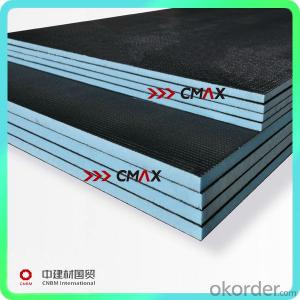Roofing insulation is not just a material that sits on top of your roof, it’s a shield that protects your home from the harsh elements of winter. It’s a silent guardian, keeping the warmth in and the cold out. But how does it do this? Let’s dive into the world of roofing insulation boards and find out.
The Science Behind Roof Insulation
Before we get into the nitty-gritty, let’s understand the basics of heat transfer. Heat naturally moves from warmer areas to cooler areas until an equilibrium is reached. Your home, during winter, is like a giant magnet for the cold outside air. Without proper insulation, this heat will escape, leaving you shivering under a pile of blankets.
Roofing insulation boards are designed to disrupt this heat transfer process. They act as a barrier, trapping the heat within your home and preventing the cold air from seeping in. Made from a variety of materials, including mineral wool, polystyrene, and polyisocyanurate, these boards have different properties that cater to various needs and preferences.
Why Choose Roofing Insulation Boards?
There are many reasons why roofing insulation boards are a popular choice among homeowners. Here are a few:
– Energy Efficiency: By reducing heat loss, your home will require less energy to maintain a comfortable temperature, leading to lower energy bills.
– Comfort: A well-insulated home is a cozy home. No more cold spots or drafts, just a consistent warmth that wraps around you like a warm hug.
– Durability: Roofing insulation boards are built to last, providing long-term protection against the elements.
– Environmentally Friendly: Many insulation materials are made from recycled or sustainable resources, making them an eco-friendly choice.
Types of Roofing Insulation Boards
When it comes to roofing insulation boards, there’s no one-size-fits-all solution. Different materials have their own unique benefits:
– Mineral Wool: Known for its excellent fire resistance and sound absorption, mineral wool is a popular choice for those concerned about safety and noise reduction.
– Polystyrene: Lightweight and cost-effective, polystyrene insulation is easy to install and offers good thermal performance.
– Polyisocyanurate: With a higher R-value than other materials, polyisocyanurate insulation provides superior thermal resistance, making it ideal for areas with extreme temperature fluctuations.
Installation Process
Installing roofing insulation boards is a straightforward process, but it’s not something you want to tackle on a whim. Here’s a simplified step-by-step guide:
1. Assess Your Roof: Before you start, you need to know the condition of your roof and the amount of insulation you need.
2. Choose the Right Material: Based on your assessment, select the insulation material that best suits your needs.
3. Prepare the Roof: Clean the roof surface and ensure it’s dry and free of debris.
4. Install the Insulation: Starting at one end, lay the insulation boards in a staggered pattern, ensuring there are no gaps.
5. Secure the Boards: Use appropriate fasteners to secure the insulation boards to the roof structure.
6. Check for Proper Fit: Make sure the insulation is snug and covers the entire roof area.
7. Seal Any Gaps: Use a high-quality sealant to fill in any gaps or seams between the boards.
Maintenance and Care
Proper maintenance is crucial to ensure the longevity of your roofing insulation. Here are some tips:
– Regularly inspect the insulation for signs of damage or wear.
– Keep the roof clear of debris, such as leaves and branches, which can affect insulation performance.
– If you notice any gaps or damage, repair them promptly to maintain the insulation’s effectiveness.
The Emotional Impact of a Warm Home
There’s something undeniably comforting about coming home to a warm and cozy environment, especially during the winter months. A well-insulated home not only keeps the physical chill at bay but also creates a sense of emotional warmth. It’s the feeling of being wrapped in a blanket of warmth, even when the world outside is cold and unforgiving.
Conclusion
Roofing insulation boards are more than just a construction material; they’re a key component in creating a comfortable, energy-efficient, and environmentally friendly home. By understanding the science behind heat transfer and choosing the right insulation for your needs, you can ensure that your home stays warm and inviting all winter long. So, embrace the cold with the confidence that your home is well-protected and ready to keep you cozy.

